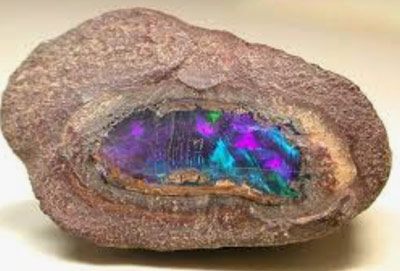 Science Of Metaphor
Science Of Metaphor
Symbolic meaning and representational embellishment pervade human cognition. This section explores the correlation between science discoveries and the dynamics of metaphor. A prominent feature characterizing our success is how we make indirect use of indirect materials, which distinguishes us from all other species, as far as we can tell. This aspect of our evolution facilitated the greater use of meaning and relationships, which allowed us to create tools, weapons, agriculture and industrialization to a dominant degree. I’ve often wondered if the fundamental dimensions of metaphor are reflected in the core of consciousness.
The Science Of Metaphor considers experimental findings that correspond to the structure and the ways we incorporate representation into almost every endeavor. Certainly, numerous factors exist throughout various fields of observation, from mathematics to sociology, that seemingly have independent parameters. However, none of them escape relational associations, which comprise the foundation of metaphor. In other words, metaphors enable us to clarify and adorn perception along with comprehension.
Each entry touches upon this theme and I welcome helpful responses and comments. On the other hand, if you just assert that I don’t know what I’m talking about, fair enough. Regardless, metaphors abound in every human mind. Let’s be clear, I’m no scientist and make no claim to any kind of expertise but merely point out interesting connections between how the universe is built as well as operates and metaphorical principles. For example, let’s take the interchangeable duel nature of matter and energy. That’s pretty basic and happens to be perfectly exemplified in the complementary nature of metaphor whereby one thing can signify another.
We can also look at the four basic forces. If they aren’t embedded in metaphor, there’s no point speculating further but that doesn’t appear to be the case. The following brief overview barely touches the surface of how metaphors relate to electromagnetism, the strong force, the weak force and gravity. First of all, the interaction of these forces allows for identical constituents to form diverse, distinct entities and this is the very definition of metaphor, a whole amalgamation, putting things together to create meaning. Here’s a simple framework:
Properties of Metaphor
 Representation correlates with electromagnetism
Representation correlates with electromagnetism
 Combination correlates with the strong force
Combination correlates with the strong force
 Transformation correlates with the weak force
Transformation correlates with the weak force
 Association correlates with gravity
Association correlates with gravity
 1) Electromagnetism = emotional charge, shedding light on connections between what appears different or separate.
1) Electromagnetism = emotional charge, shedding light on connections between what appears different or separate.
Metaphor embodies the particle/wave nature of light through the literal/figurative dynamic of interpretation. A metaphor references a specific relationship while at the same time pointing to a broader context. As soon as something is used as an effective metaphor, meaning becomes expanded just as soon as light shines on something there is more clarity. Metaphors illuminate the similarities between different or unconnected objects, events and situations. A metaphor can be precise and general at the same time just as an electron is simultaneously both a particle and wave. Tears are like rain, both being composed of water while one falls from the sky and the other from an eye. In other words, metaphors are local and distributed conjunctively. Metaphors enhance meaning in the same vein as matter is energized by light. One could even say that metaphors help make things matter by conveying significance. They identify relationships and therefore, in my humble inexpert opinion, it was inevitable that a cognitive creature using tools would develop a metaphorical form communication and approach to perceiving the world. Light has many frequencies and metaphors have many layers of relevance.
Here’s how I apply physics to psychology. When an electron goes through a magnetic field, it releases a photon. When an emotion goes through an unconscious field, it produces a metaphor. The metaphor can illuminate or burn depending on the relationship between the ego and the unconscious at that time.
 2) Strong Force = binding energy, grasping a connection
2) Strong Force = binding energy, grasping a connection
Next comes the strong nuclear force, which holds the quarks together in an atomic nucleus. Metaphors also bind through the establishment of associations, such as tears and rain in the previous example. Metaphors combine meaning between different elements by juxtaposing similarities.
In the context of a metaphorical coincidence, if we think about someone with whom we haven’t spoken for years and suddenly receive a phone call from that person, there’s a strong sense of the inner thought being connected to the outer experience. Thus, metaphors can facilitate accessing the unconscious.
 3) Weak Force = breaking down an arrangement, transformation
3) Weak Force = breaking down an arrangement, transformation
Then we have the weak force, the source of decay and deterioration. This force reveals the inherent rearrangement or transformation of matter and metaphors change how we respond to existence. Metaphors rearrange meaning through breaking down rigidly confined definitions by making connections between dissimilar things through substitution.
The weak interaction is unique because it allows quarks to swap their flavor for one or another. Swapping equals exchanging, which is what creativity does. The swapping of properties is the heart of metaphor, exchanging the same qualities between different things.
 4) Gravity = combination of elements, juxtaposition on a bigger scale
4) Gravity = combination of elements, juxtaposition on a bigger scale
Last but not least there is gravity and the correlations with metaphor, once again, seem rather apparent. Gravity amounts to the accretion of particles that become closer in their association together. The more particles closely associate, the greater gravity increases. Metaphors are associations that form when meanings are drawn together. When contrasting meanings are combined, they have greater association and the more associations a metaphor contains, the more impact it produce. In other words, when the phone call came out of the blue, the significance is amplified if the person you happened to think about was an estranged sibling rather than a casual friend.
Gravity pulls material together for an association and metaphors gather connotations together for synthesis.
In summary, examining how the attributes of the universe line up with metaphorical characteristics can never be complete. That’s why these speculations are by no means exhaustive and I’ll be revisiting various details to refine and tighten the tapestry unfolding in the science of metaphor. The bottom line is that no one escapes gravity and as conscious creatures, no human mind that uses language is devoid of emblematic awareness and expression. We can’t help it and therefore, it’s natural that a fuller comprehension of allusive logistics and cosmic underpinnings can bolster our ability to face challenges, personal or existential. After all, what good is an outlook that isn’t practical and effective. Does metaphor recognition stop pain? No but it increases our mental container to handle stress and feel less overwhelmed.
When it comes to biology, I also don’t purport to explain how metaphoric principles are imbued in the vicious truth that “nature is red in tooth and claw”. Neither can I comprehensively describe how aspects of metaphor fit into the precepts of becoming an organism, dependent on passing elements from the environment though a body. Why do we constantly generate waste and what does this intrinsic condition have to do with metaphor? Actually, the latter part of the question is easy because apprehending metaphors helps us deal with our shit.
Hopefully, as time passes, contributive feedback will clarify the symbolic foundation of diverse scientific dimensions such as entropy and the various constants. I welcome the thoughts of bonafide researchers and teachers but being a layman lacking credentials, there isn’t much anticipation about their interest. Still, they won’t be able to send a coherent response, one way or another, without employing the representational tool of language, a fact that, to a small degree, illustrates my point.

